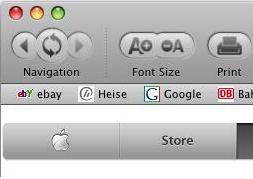

Traditional browser arrangement: UI features above page content Some provide a sync service and web accessibility features. They also allow users to set bookmarks, customize the browser with extensions, and can manage user passwords. They automatically log browsing history or can be used in a non-logging private mode. The most popular browsers have a number of features in common. But this is a temporary option, only activated when using this special mode. īrowsers also usually provide menu items for deleting browsing history, cache entries, and other potentially sensitive data.Īn alternative approach is the private browsing mode, in which the aforementioned items are not stored by the browser. Finer-grained management of cookies usually requires a browser extension. However, others are used for tracking user behavior over long periods of time, so browsers typically provide a section in the menu for deleting cookies. Some of them contain login credentials or site preferences.

Various network connectivity and privacy settings are also usually available.ĭuring the course of browsing, cookies received from various websites are stored by the browser. They also can change default web page colors and fonts. For example, users can change their homepage and default search engine. The menu has different types of settings. Depending on the browser, the menu may be named Settings, Options, or Preferences. Web browsers can typically be configured with a built-in menu. Cached items are usually only stored for as long as the web server stipulates in its HTTP response messages. The cache can store many items, such as large images, so they do not need to be downloaded from the server again. Most browsers use an internal cache of web page resources to improve loading times for subsequent visits to the same page. Thus the process of bringing content to the user begins again. Each link contains a URL, and when it is clicked or tapped, the browser navigates to the new resource. Web pages usually contain hyperlinks to other pages and resources. Many web browsers can display partial content, while the retrieval is still in progress, providing more responsive behavior, especially on slower network connections. This includes image and video formats supported by the browser. Once a web page has been retrieved, the browser's rendering engine displays it on the user's device. In the case of secure mode (HTTPS), the communication between the browser and the web server is encrypted for the purposes of security and privacy. Virtually all URLs on the Web start with either http: or https: which means the browser will retrieve them with the Hypertext Transfer Protocol (HTTP). This process begins when the user inputs a Uniform Resource Locator (URL), such as, into the browser. The purpose of a web browser is to fetch content from the Web or from a local storage device and display it on a user's device. In Hypertext Transfer Protocol technical texts, web browsers (and other clients) are commonly referred as user agents. The most used browser is Google Chrome, with a 63% global market share on all devices, followed by Safari with 20%. In 2020, an estimated 4.9 billion people used a browser. Web browsers are used on a range of devices, including desktops, laptops, tablets, and smartphones. However, to connect to a website's server and display its web pages, a user must have a web browser installed. A search engine is a website that provides links to other websites. When a user requests a web page from a particular website, the web browser retrieves the necessary content from a web server and then displays the page on the user's device.Ī web browser is not the same thing as a search engine, though the two are often confused.
Web browser icab software#
A web browser (also referred to as an Internet browser or simply a browser) is application software for accessing the World Wide Web or a local website.


 0 kommentar(er)
0 kommentar(er)
